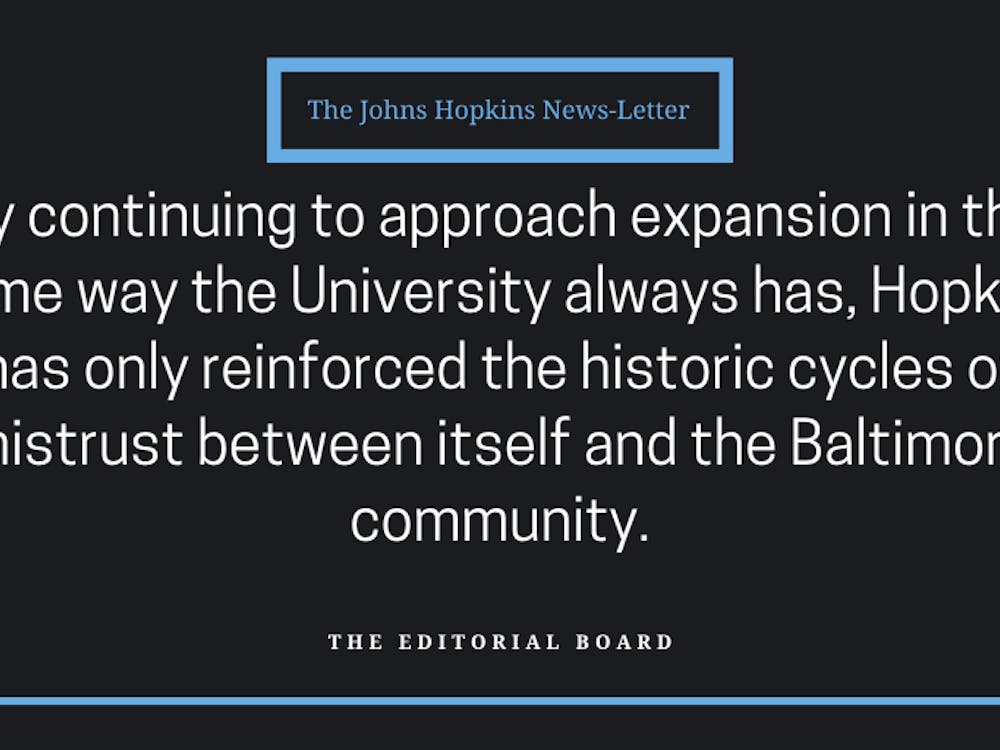A recent uptick in armed robberies has caught the University’s attention, not just because of their heightened frequency, but because they seem to be getting closer and closer to campus. Given that the University preaches student safety above just about all else, the Editorial Board believes extensive measures need to be taken in order to restore safety and comfort to student lives.
The University’s plan in response to the recent robberies includes solutions like increasing police patrol around the affected areas, increasing lighting and stationing more security guards in hopes of deterring future crimes from being committed. The problem with this solution, however, is that it misses the point.
Allied Barton security guards are stationed right outside of both the Subway and the 7-11 that were robbed right next door to our dorms and classrooms. And yet their presence alone did nothing to deter the thugs from perpetrating the crimes. Logically, this would seem to make sense: How can an unarmed guard hope to stop a robbery while it is taking place? Ignoring the fact that many of these Allied Barton security guards show little focus while on the job, they simply don’t have the skills or materials required to do something should a crime actually occur.
The Editorial Board believes that the answer is not to place more scarecrows around the area; the birds have caught on.
Instead, the University should hire many more off-duty police officers who have been properly trained in preventing crime. These off-duty police officers, regularly stationed in such strategic locations as in front of Subway and in front of 7-11, would be an upgrade over the Allied Barton security guards not only because they, too, could act as deterrents to crime, but because they could actually do something in the case that a robbery occurs.
The biggest problem with Campus Safety and Security’s proposal for addressing this crucial problem of creeping violent crime is that it fails to recognize all of the shortcomings of the Allied Barton officers that are plainly evident to all students. Throwing more Allied Barton officers at the problem will do very little; replacing many of the Allie Barton stations and patrols with off-duty BPD officers would go a long way in addressing the very real safety concerns of the status quo.
We fully understand that our proposed solution would force the University to spend more money on hiring better trained, more qualified guards. However, we strongly believe that an increase in security spending is absolutely essential — nothing is more important than student safety and security. This is especially true when considering prospective students. A major reason many students elect not to attend this particular university is because of the high crime rate in the area. If they can’t be promised a feeling of comfort when walking to class, why would they choose to come here in the first place? Hopkins is well-aware of this problem, so the Admissions Office and campus tour guides state and restate the incredible security at the Homewood Campus. And while it’s true that there are three levels of security before you step into your Wolman dorm room, that means nothing if Hopkins can’t ensure your safety as you walk down St. Paul Street — a mere block away from the front gates of our campus — to get home. If additional funding for whatever it takes to make students be safe and feel safe has to come from somewhere else in the University’s budget, we can’t imagine that tuition-paying parents of prospective and current students would ever object.
The Editorial Board believes it must be priority for the University to increase its security spending — but more importantly, to spend it in the right places.
We are all scared; Hopkins needs to act.















Please note All comments are eligible for publication in The News-Letter.